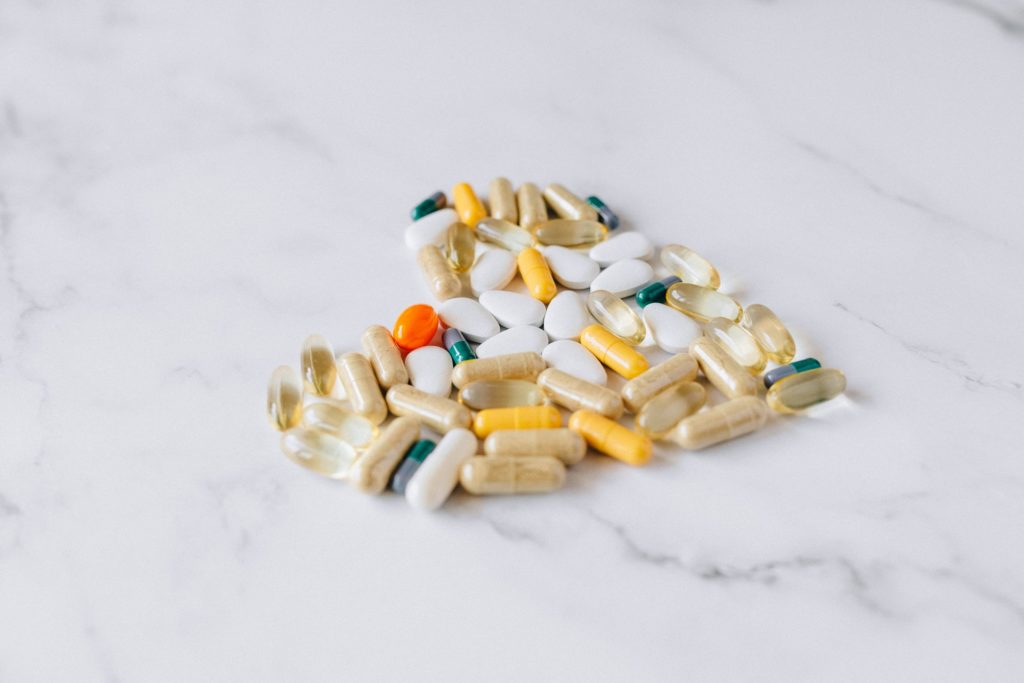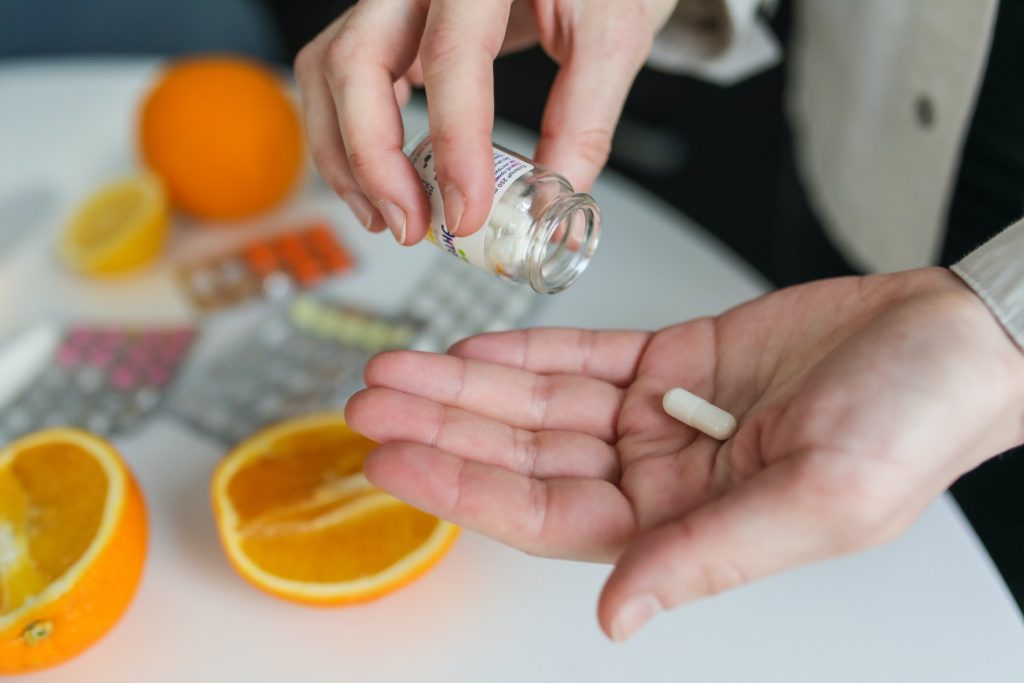What is Alpha Lipoic Acid (ALA)? It’s a compound that is naturally found in the body. It works on breaking down the food you consume into energy so your body can use it. ALA is also found in red meat, broccoli, spinach, carrot, potatoes, tomatoes, and rice bran. Using Alpha Lipoic Acid for skin can keep it protected against aging signs.
Alpha Lipoic Acid is a powerful antioxidant which means it can benefit your skin and improve your health effectively.
Although our bodies produce ALA in a small amount, your diet can play a major role in boosting its levels in your body by consuming the food that is rich in it. Plus, it’s available in supplements.
In this article, I will include the potential benefits of Alpha Lipoic Acid for skin, where it comes from, why it’s special, how to add it to your skincare routine, its side effects, and some other FAQ.
Table of Contents
Where Does The Alpha Lipoic Acid Come From?
Alpha Lipoic Acid has been discovered in the 1950s, and ever since there have been clinical trials to test its effectiveness for our health.
It’s a natural antioxidant that is found in our bodies and some foods. ALA helps combat free radicals, prevent collagen and elastin breakdown, reduce inflammation, and protect the skin against texture irregularities.
It also can benefit your health as studies showed that ALA can be helpful for people with diabetes, Alzheimer’s disease, or multiple sclerosis. And it can benefit pregnant women and be used for obesity.
Plus, some studies showed promising results of the benefits of Alpha Lipoic Acid for skin Including:
7 Potential Benefits Of Alpha Lipoic Acid For Skin:

1- Has Anti-aging Benefits
It becomes widely known that ALA is a powerful antioxidant, meaning it has anti-aging benefits. It helps prevent skin damage caused by environmental factors.
A study found that Alpha Lipoic Acid can protect your skin against aging signs if used properly. But we still need more studies to understand its effects completely.
2- Shield The Skin Against The Sun
A study showed that combining 1.1% alpha-tocopherol and 0.5% lipoic acid can benefit the skin by delivering antioxidants into the skin which provide sun protection.
Alpha Lipoic Acid is not found in the outer layer of your skin that’s why you will need to apply it topically on your skin to shield it against the harmful sun rays.
More human studies are still needed to show how significant its effects are on protecting the skin from the sun.
3- Reduce Pigmentation
A study found that using Alpha Lipoic Acid can help lighten dark spots and remove pigmentation caused by the sun in Guinea pigs and mice. We need human studies to prove its effects on removing dark spots.
4- May Accelerate Wound Healing Process
One of the potential benefits of Alpha Lipoic Acid for skin is its ability to speed up wound healing.
A study showed that topical application of ALA on the skin may help improve wound healing in rats.
It may heal wounds caused by a surgical incision. The study showed that wounds improved in 60.7% of the rats after topically applying ALA for seven days.
5- Reduce Fine Lines And Wrinkles
A study found that using a 5% topical Alpha Lipoic Acid solution can significantly reduce fine lines in the upper lip area in most volunteers. So it has powerful anti-wrinkle effects on the skin.
It also helped improve skin color and texture in most of the participants.
Plus, researchers reported no irritation, peeling, or other adverse side effects associated with using ALA.
6- May Heal Smoked-Induced Skin Damage
A study showed that Alpha Lipoic Acid may reduce skin damage caused by being exposed to cigarette smoke in rats.
Exposing your skin to cigarette smoke can lead to the formation of oxidative stress which could eventually damage your skin cells.
So the researchers found that ALA has anti-inflammatory and anti-oxidative properties that can heal skin damage caused by smoking in rats.
7- Other Potential Benefits
Alpha Lipoic Acid doesn’t cause irritation, dryness, or redness which makes it a great ingredient in any skincare product for sensitive skin.
This compound may also help soothe and moisturize winter dry skin.
Plus, Alpha Lipoic Acid may minimize the size of pores, unclog pores, reduce eye puffiness, and clear up pimples.
Usually, skincare products that contain ALA are formulated with a mix of other ingredients that can all together soothe and moisturize the skin and reduce aging signs.
Related: How To Unclog Pores: 8 Safe Ways To Keep Your Skin Glow
How To Use Alpha Lipoic Acid For Skin?
Alpha Lipoic Acid Benefits For skin are several due to its antioxidant, anti-inflammatory, and anti-aging properties.
It works on improving skin health, preventing skin damage, and reducing the appearance of aging signs.
So how to use ALA properly to guarantee the best results? It is available in two forms, topical creams & gels or oral supplements.
Topical Alpha Lipoic Acid creams and gels contain a concentration of 1%-5% of ALA to help protect and moisturize the skin and reduce fine lines and wrinkles.
Alpha Lipoic Acid skincare products are now widely available on the market so you can pick what you like.
It’s recommended to apply 1%-4% ALA creams or gels every other day for about 3 weeks before starting to use it every day.
Also, keep in mind to perform a patch test first and wait for 24 hours. If your skin shows any signs of an allergic reaction, don’t use the product again.
As for oral Alpha Lipoic Acid supplements, it’s best to take the recommended dose that is mentioned on the bottle.
The daily dosage is up to 1.800 mg without causing side effects.
We still need more studies to figure out the long-term effects of taking ALA supplements.
Side Effects Of Using Alpha Lipoic Acid For Skin:

Eating foods that contain ALA is safe for most people if consumed moderately. Also, Alpha Lipoic Acid supplements are safe if taken in the recommended dose.
Keep in mind to avoid taking high doses of ALA supplements as this will lead to side effects.
Not all side effects are known due to the lack of studies on human bodies. However, the side effects reported are mild, ranging from mild nausea, gastrointestinal symptoms, and skin irritation.
People with schizophrenia who took 600-1.800 mg of ALA supplements orally every day developed no serious side effects.
Only some of them experienced mild skin irritation and mild gastrointestinal symptoms after taking the supplements for 12 weeks.
In a group of patients with diabetic nephropathy, only one person of the participants reported mild nausea as a side effect of taking the supplements. They took 600 milligrams of ALA for 8 weeks a day.
So if you wanna take ALA supplements, talk to your doctor before adding them to your routine to be sure that you’re on the safe side.
Plus, children and pregnant women should not be taking ALA supplements without consulting a doctor.
Why Alpha Lipoic Acid Is Special?
Using Alpha Lipoic Acid for skin has become essential for many women, but why is it so special? ALA has a great advantage, it’s both water and oil soluble.
This means your body can absorb and deliver it into your cells easily, no matter what you have eaten or drunk it with.
Not all antioxidants can offer this remarkable advantage, for example, vitamins E & A need to be taken with food to allow your body to absorb and store them, and vitamin C should be taken with water so the cells can absorb it well.
Is Alpha Lipoic Acid Better Than Vitamin C?
Alpha Lipoic Acid is a strong natural antioxidant that is 400 times more potent than vitamin C and E.
Also, ALA helps your body produce vitamin C, this makes products that contain ALA super beneficial for skin health.
Can You Use Vitamin C And Alpha Lipoic Acid Together?
According to Drugs.com, using vitamin C along with Alpha Lipoic Acid doesn’t seem to interact badly with your health or cause side effects. But they also recommend talking to your healthcare provider before using them together.
Is Alpha Lipoic Acid Good For Acne?
Alpha Lipoic Acid has antioxidant and anti-inflammatory properties so it can help reduce inflammation, boost skin texture, relieve irritation, clear pores, and improve the skin barrier function. This could benefit acne-prone skin and keep it healthy.
What Vitamins Should Not Be Taken With Alpha Lipoic Acid?
Some herbal or health supplements could decrease blood sugar levels. Those supplements should not be taken with Alpha Lipoic Acid.
They include horse chestnut, fenugreek, guar gum, psyllium, Siberian ginseng, devil’s claw, garlic, and Panax ginseng.
Is Alpha Lipoic Acid An Exfoliant?
Alpha Lipoic Acid can enhance the skin’s ability to exfoliate so your skin cells will be able to shed naturally.
This can help keep your skin looking healthy, glowing, and young.
Related: The Glow Up Challenge: 41+ Experts Share Their Best Tips
Wrapping Up
Based on some studies, using Alpha Lipoic Acid for skin has the potential to reduce aging signs, prevent skin damage caused by the sun, and improve skin texture.
ALA has powerful antioxidant effects which makes it a great addition to any skincare routine. More clinical research is needed to fully understand the benefits of ALA for the skin.
So after reading the article, what do you think? Are you going to try Alpha Lipoic Acid to boost your skin health?
